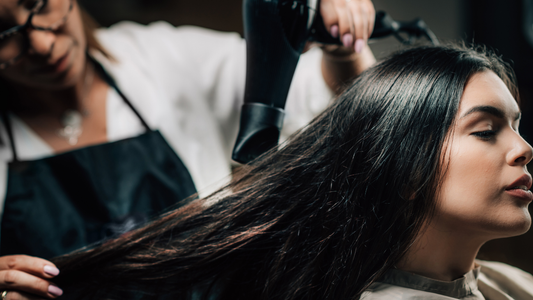Swimming is a great way to stay fit and relax, but for those with keratin-treated hair, such as those using the Kera Mane Keratin Hair Treatment, it poses a unique challenge. Chlorine in pool water and salt in seawater can significantly compromise the integrity of a keratin treatment, stripping away its smoothing effects and potentially damaging your hair. However, with the right precautions, you can still enjoy swimming without sacrificing the health and beauty of your keratin-treated locks. This guide will provide tips for protecting your keratin-treated hair from the harsh effects of chlorine and saltwater, ensuring that it remains smooth, sleek, and healthy.
Understanding the Effects of Chlorine and Saltwater on Keratin-Treated Hair
1. Chemical Reactions:
- Chlorine: Chlorine is a harsh chemical that can break down the proteins in keratin-treated hair, leading to dryness, dullness, and frizz.
- Saltwater: Saltwater can draw moisture out of your hair, leaving it dry and brittle, and can similarly degrade the keratin treatment, reducing its effectiveness and longevity.
Protective Strategies for Swimming with Keratin-Treated Hair
1. Pre-Swim Care:
- Wet Your Hair with Fresh Water: Before jumping into the pool or ocean, thoroughly wet your hair with fresh, clean water. Saturated hair absorbs less chlorine or saltwater, reducing the potential harm.
- Apply a Leave-In Conditioner or Oil: Coat your hair with a silicone-based leave-in conditioner or a protective oil like coconut or argan oil. This creates a barrier that helps protect the hair from chemical and salt damage.
2. Wear a Swim Cap:
- Use a High-Quality Swim Cap: While it might not be the most fashionable accessory, wearing a swim cap is one of the most effective ways to protect your hair from water damage. Ensure it fits snugly to minimize water seepage.
3. Post-Swim Rinse:
- Rinse Immediately: After swimming, rinse your hair thoroughly with fresh water as soon as possible. This helps remove any chlorine or salt residue that can continue to damage your hair even after you leave the water.
- Use a Sulfate-Free Shampoo: Later, wash your hair with a gentle, sulfate-free shampoo formulated for keratin-treated hair. This will help cleanse any remaining residues without stripping away the keratin.
4. Deep Conditioning:
- Replenish Moisture: Regularly use a deep conditioning treatment or mask specifically designed for keratin-treated hair. This helps restore moisture and repair any damage that swimming might cause.
5. Limit Exposure:
- Reduce Frequency: If you’re an avid swimmer, try to reduce the frequency of your swims or limit the duration you spend in the water to decrease exposure to harmful elements.
6. Avoid Heat Styling:
- Natural Drying: After swimming, let your hair air dry when possible, or use the cool setting on your blow dryer. Avoid high heat, which can exacerbate the damage done by chlorine and saltwater.
7. Regular Maintenance:
- Touch-Up Treatments: Consider scheduling more frequent keratin touch-ups if you swim regularly. This can help maintain the strength and smoothness of your hair despite the harsh conditions.
Conclusion
With the proper precautions, swimming doesn't have to be off-limits for those with keratin-treated hair. By preparing your hair before swimming, taking immediate action after swimming, and following a dedicated maintenance routine, you can protect your hair from the damaging effects of chlorine and saltwater. These steps will help ensure that your Kera Mane Keratin Hair Treatment continues to keep your hair smooth, shiny, and healthy, allowing you to enjoy both beautiful hair and your time in the water.




